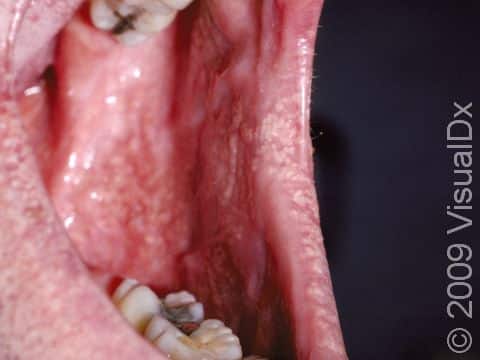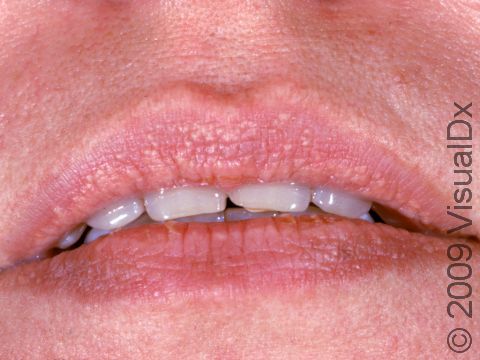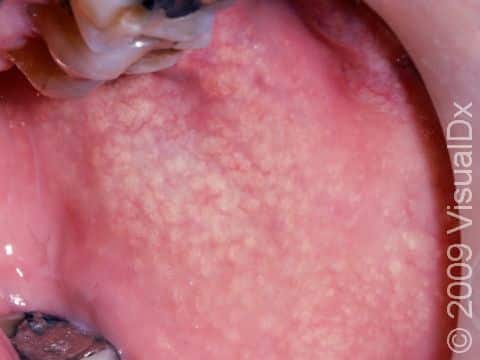Fordyce Spots
Fordyce spots are enlarged sebaceous (oil-producing) glands seen on mucosal surfaces, the moist tissue that lines body cavities. Common locations for Fordyce spots include the edges of the lips, inside the mouth / cheeks, inside the lower eyelids, and on the genitals, such as on the head of the penis, in the inner foreskin, or within the labia. These lesions typically do not itch and are not painful, but itch or irritation may occur if they are injured in some way.
Who's At Risk?
Fordyce spots can appear at any age, but the likelihood of developing them increases with age, and they are most common in adults older than 65 years. They can be associated with hormones, so people may notice them appear during puberty or at other times of hormonal change.
Signs & Symptoms
Fordyce spots are tiny yellow-white papules (solid bumps) that appear on mucosal surfaces. There are often multiple (usually less than 10) papules, but there may be just one. Fordyce spots appear similarly in all individuals despite skin color, but the spots may be harder to see in darker skin colors.
The most common location for Fordyce spots is at the border of the lips, especially near the corners of the mouth. Other locations include the back portions of the inner cheeks and inside the mouth, including the tonsils. The head of the penis and inner portion of the foreskin or inside the labia may also be affected. Fordyce spots often occur bilaterally (eg, inside both sides of the cheeks).
Self-Care Guidelines
No self-care is necessary for Fordyce spots, but do not attempt to scrape at or remove them on your own, as this could cause pain and irritation.
Treatments
No treatment is needed. If the Fordyce spots become bothersome, though, you can discuss with your medical professional surgical removal, laser removal, chemical removal, or electrodessication and curettage (scraping and burning), but these methods all involve a risk of scarring.
Visit Urgency
Fordyce spots are normal and are no cause for medical concern, but seek medical evaluation if new spots arise in mucosal areas such as inside the mouth, eyes, or genitals and you are unsure of the cause. Also seek care if you have Fordyce spots that become itchy or irritated.
References
Bolognia J, Schaffer JV, Cerroni L. Dermatology. 4th ed. Philadelphia, PA: Elsevier; 2018.
James WD, Elston D, Treat JR, Rosenbach MA. Andrew’s Diseases of the Skin. 13th ed. Philadelphia, PA: Elsevier; 2019.
Kang S, Amagai M, Bruckner AL, et al. Fitzpatrick’s Dermatology. 9th ed. New York, NY: McGraw-Hill Education; 2019.
Paller A, Mancini A. Paller and Mancini: Hurwitz Clinical Pediatric Dermatology. 6th ed. St. Louis, MO: Elsevier; 2022.
Last modified on June 17th, 2024 at 2:37 pm

Not sure what to look for?
Try our new Rash and Skin Condition Finder



